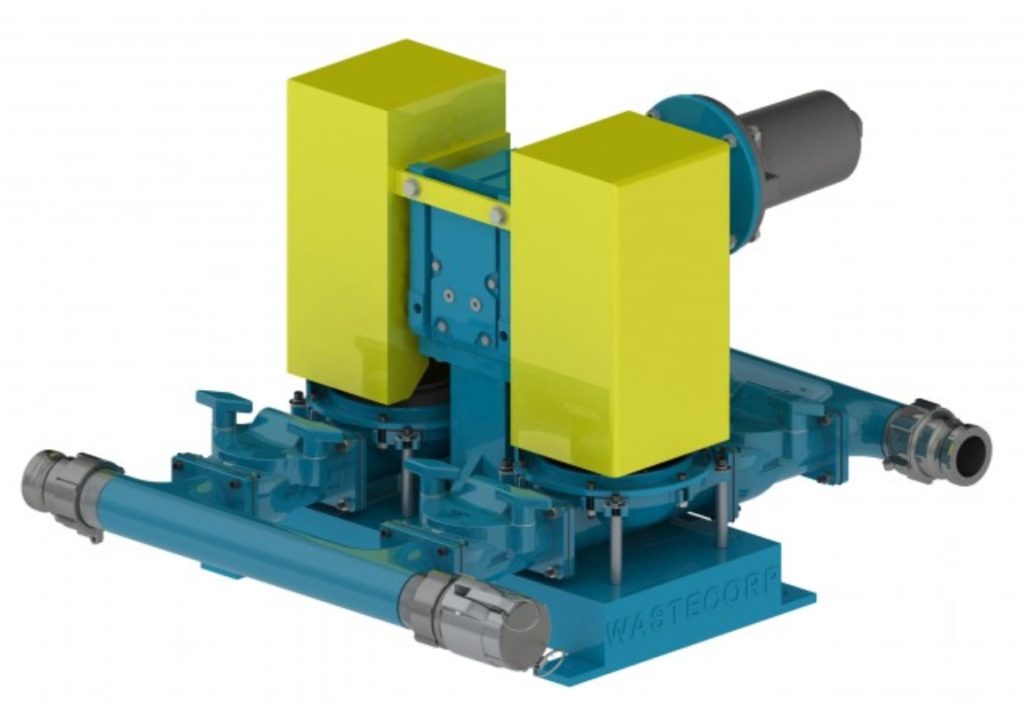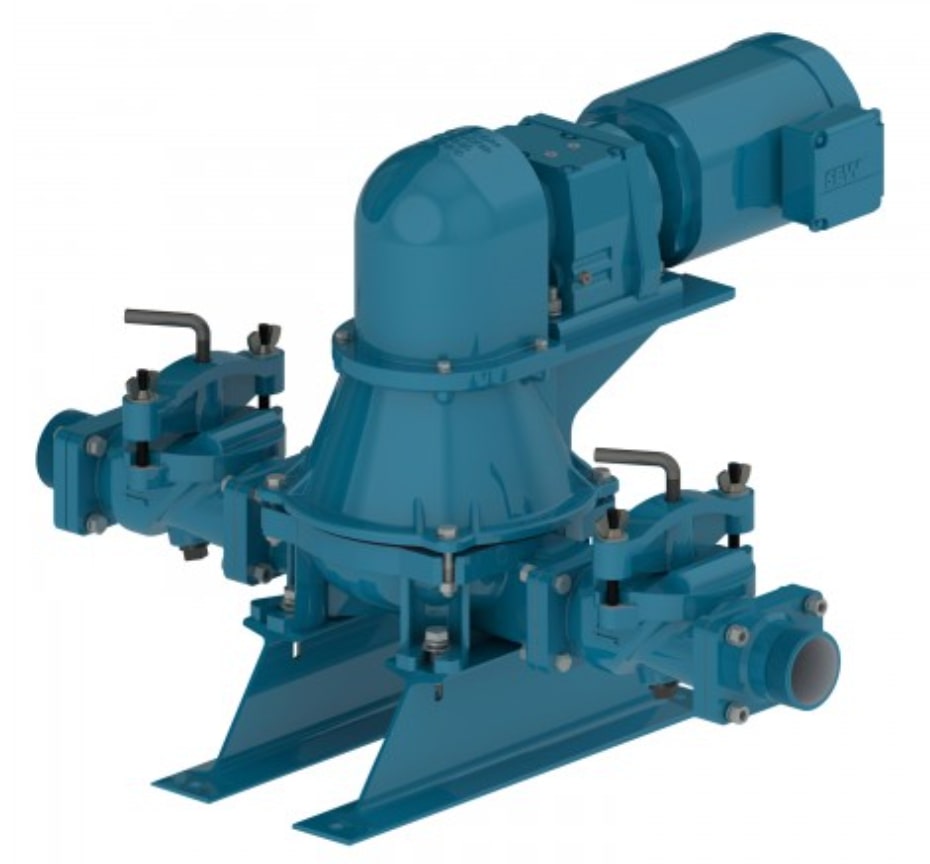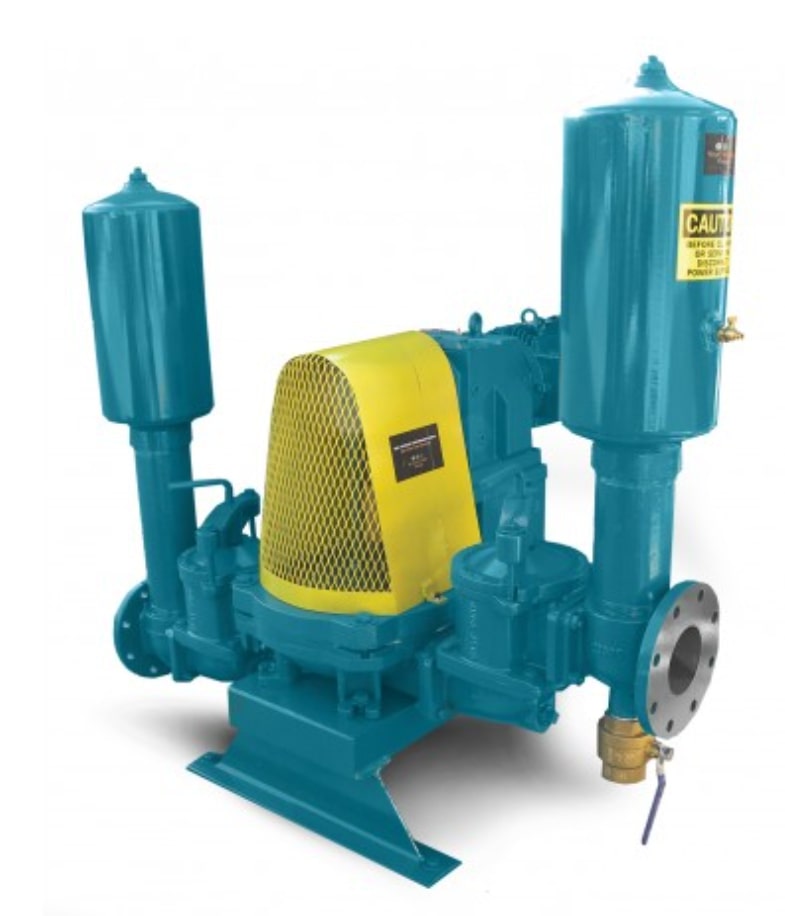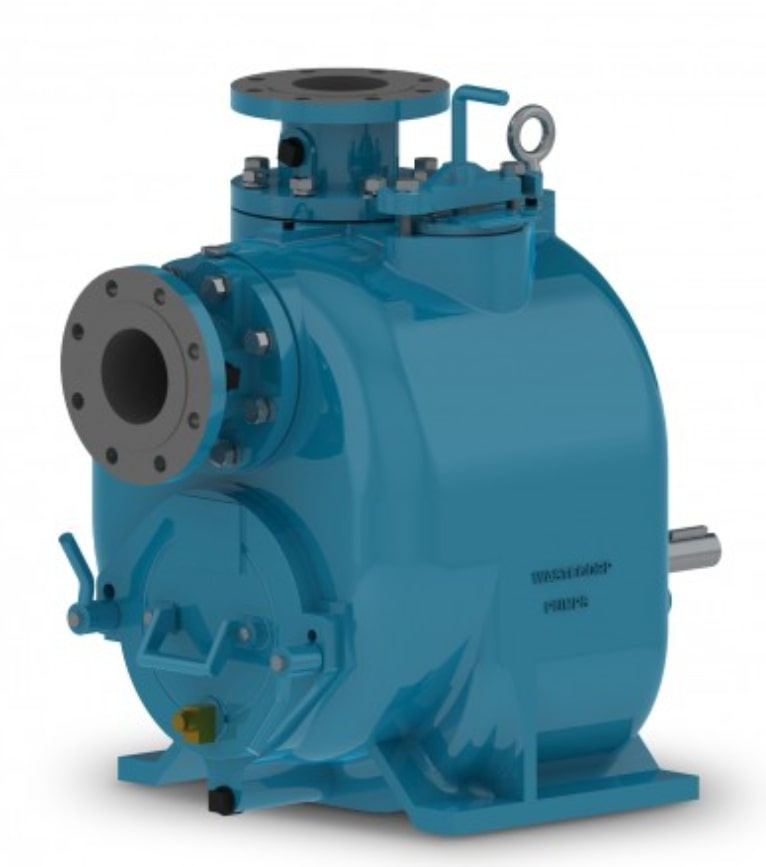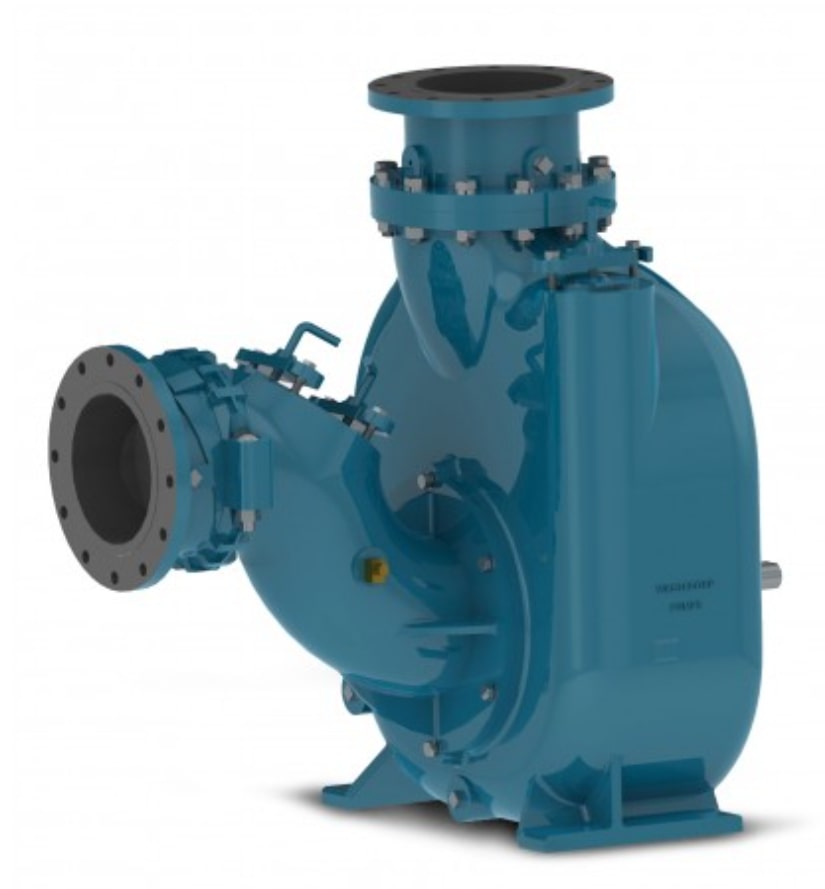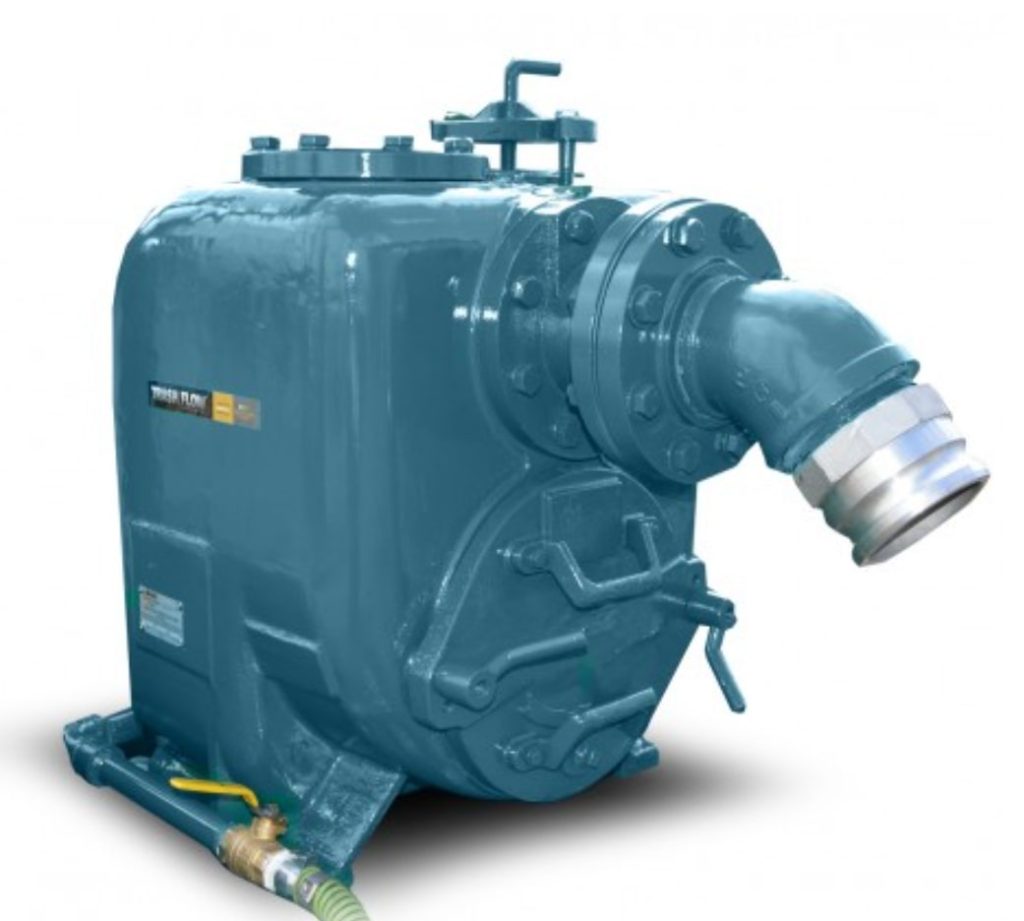As the two most common types of pumps on the market, diaphragm pumps and centrifugal pumps are both great choices for a variety of applications, including liquid transfer and spraying applications. However, there are some important differences in how these pumps operate and which tasks they’re most suitable for. In this guide, we’ll explain how diaphragm and centrifugal pumps work and their pros and cons so you can make an informed purchase decision. Short on time? Click here for a quick overview.
How Diaphragm Pumps and Centrifugal Pumps Work
Diaphragm pumps (also known as membrane pumps) use air pressure and suction to collect and expel liquid. During operation, an air vacuum is created inside the diaphragm pump by the oscillating motion of the diaphragms, which pulls liquid, and any solid particles present, into the pump chamber and with the help of flapper or ball valve technology, moves it through the system, a process known as positive displacement. Though some types of diaphragm pumps require electricity to operate, many models can run using compressed air alone. This feature allows diaphragm pumps to be used in a variety of situations and environments.
Centrifugal pumps (also known as aerodynamic pumps) use impellers to move liquid. Impellers consist of multiple curved vanes, similar to fan blades, that rotate rapidly to create a powerful, continuous flow of liquid through the pump casing. Impellers may be open or semi-open (having one or no discs around the vanes) or enclosed (having two discs around the vanes). Open and semi-open impellers are recommended for use with liquids containing suspended solids, whereas enclosed impellers work well with clear, low-viscosity fluids. Unlike diaphragm pumps, centrifugal pumps require electricity as they utilise motors and drive shafts to move the impeller.
Diaphragm Pumps Vs. Centrifugal Pumps: Advantages & Disadvantages
Diaphragm pumps and centrifugal pumps have distinct characteristics that make them useful in different situations. Below, we’ll explain the unique pros and cons of each type of pump:
Centrifugal Pumps
Advantages:
Higher flow rate: Centrifugal pumps can produce higher flow rates than diaphragm pumps (when working with low-viscosity liquids). For example, centrifugal pumps designed for sprayers typically move between 25-300 gallons per minute, whereas diaphragm pumps designed for the same application move about 1-100 gallons per minute.
Simple design: Centrifugal pumps have fewer moving parts than diaphragm pumps and don’t require a pressure relief valve to prevent damage to the pump. Because diaphragm pumps contain a gearbox, diaphragms, check valves, pulsation damper, and (for hydraulic models) an oil lubrication system, they require more oversight and have higher maintenance requirements than centrifugal pumps. However, when made with high-quality materials and operated correctly, both centrifugal and diaphragm pumps are very durable.
Energy efficient: It takes less horsepower to produce higher flow rates with centrifugal pumps, resulting in decreased energy usage.
Disadvantages:
Requires priming: Unlike diaphragm pumps, which don’t need priming, most centrifugal pumps must be primed before operation. Priming is a complex process that involves removing air from the pump and suction line, often with a jet pump or vacuum pump. Because they require priming, centrifugal pumps are more challenging to start up than diaphragm pumps.
Can’t be run dry: Running centrifugal pumps dry can cause significant damage to the unit. As such, centrifugal pumps are not recommended for applications with intermittent liquid flow unless they have been fitted with special abrasion-resistant seals.
Not suitable for high-viscosity (thick), abrasive, or shear-sensitive liquids: Centrifugal pumps lose their efficiency when pumping high-viscosity fluids and may overheat, causing premature damage to the unit. Likewise, shear-prone liquids may separate due to the rapid action of the impeller.
Pressure-sensitive: The flow rate of a centrifugal pump varies with changes in pressure, and centrifugal pumps are less capable of producing high pressure than diaphragm pumps.
Diaphragm Pumps
Advantages:
Consistent flow rate: Unlike centrifugal pumps, diaphragm pumps can maintain a consistent flow rate despite variations in pressure or fluid viscosity.
Produce higher pressure: Diaphragm pumps can handle very high PSI values without sustaining damage.
Better at handling high-viscosity, abrasive, and shear-sensitive liquids: The efficiency of diaphragm pumps increases when pumping higher-viscosity liquids, such as oils and slurries, and their mechanism of action allows them to pump abrasive fluids safely. Similarly, diaphragm pumps won’t damage shear-sensitive liquids due to their low internal velocity.
Priming is not required: Starting up a diaphragm pump is simple: Run the unit at a low pressure (2 bar) and flow rate, then gradually increase the pressure until you achieve the desired flow rate.
Can be safely run dry: Diaphragm pumps can be run dry for up to half an hour without damage to the unit, making them ideal for use when liquid flow may be intermittent.
Disadvantages:
Inefficient when pumping low-viscosity liquids: Diaphragm pumps are best suited to pumping liquids over 200 Cp viscosity or with a high volume of suspended solids.
Require more routine maintenance than centrifugal pumps: Diaphragm pumps must be serviced every 300 hours (or once per usage season, depending on which occurs first). That is, they must be cleaned, inspected, undergo an oil change, and have a new set of diaphragms fitted.
Reduced flow rate: Diaphragm pumps have a lower overall flow rate than centrifugal pumps, especially when run at lower horsepower.
When Should You Use a Diaphragm Pump (or a Centrifugal Pump)?
In many industries, diaphragm pumps and centrifugal pumps are used alongside one another for best results. For example, in a food processing plant, centrifugal pumps are used to transfer water, while diaphragm pumps transfer viscous fluids like cooking oil, syrups, and dairy products. As such, it isn’t uncommon for our clients to purchase both types of pumps for use at different stages of production or waste management.
Once you understand the differences between diaphragm pumps and centrifugal pumps, you can use the following questions to determine which type of pump you need:
Where do you plan to use the pump?
If you plan to work off-site and need a portable pump, a diaphragm pump is probably the best choice. In addition to being powered by compressed air, diaphragm pumps can be mounted on a cart and transported virtually anywhere.
What type of liquid is being pumped?
Centrifugal pumps are recommended for pumping low-viscosity liquids, such as water, solvents, certain chemicals, and light oils. Diaphragm pumps, on the other hand, are the best option for pumping shear-sensitive fluids, thick fluids, such as heavy oils, wastewater, mineral, mud, and clay slurries, fertiliser, and corrosive or abrasive slurries.
How much pressure does your task require?
For tasks requiring pressures lower than 100 psi, a centrifugal pump will generally perform better thanks to its higher flow rate. However, if you need to use pressures between 100-700 psi, a diaphragm pump will deliver a more consistent flow rate.
Shop our Range of Diaphragm and Centrifugal Pumps For Sale
Our pumps come in a variety of connection sizes and are customizable to best meet your pumping needs.
Diaphragm Pumps
Centrifugal Pumps
Contact the Experts at Wastecorp for Help Choosing a Pump
Though the guidelines above provide a general overview of when to use diaphragm or centrifugal pumps, there are many different pumps available for a wide variety of applications. To find the best pump to fit your needs, browse our extensive selection of pumps by industry or contact us for advice. Our experts will match you with the best-suited product or design a custom pump for your intended task, so you get precisely what you’re looking for. Our pumps are designed, engineered, and manufactured exclusively in North America, ensuring superior product quality and easy access to replacement parts.
At Wastecorp, we pride ourselves on making pumping safe, efficient, and affordable – no matter how challenging a job is. We look forward to sharing our commitment to a cleaner future when you purchase our pumps.

